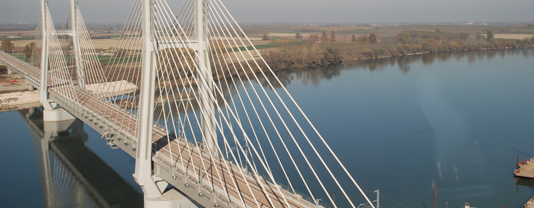Rete Ferroviaria Italiana is the company of Gruppo FS Italiane that today has total responsibility for constructing, commissioning, operating and maintaining the entire high-speed/high-capacity network. At its helm, since September 2006 when he was appointed CEO, is engineer Mario Michele Elia. Just like Mauro Moretti, the CEO of the Gruppo FS Italiane, Elia is a ‘career railway man’ and his knowledge of the sector for which he is responsible is unparalleled.
He began working for FS in 1975 and as time went by he held increasingly important roles until 1998 when he was placed in charge of the Technical Department of the Infrastructures Division and in 2001, with the creation of RFI SpA, he became its Technical Director. Under his leadership the ERTMS/ETCS system was designed and created – the most advanced rail safety technology deployed on fast (High Speed/High Capacity) lines – adopted by the European Union as a standard of reference for new transnational high-speed systems and the recipient of numerous international awards. No one more than he has lived through the exciting yet complex stages of the construction of Europe’s most advanced high-speed railway system at such close quarters.
A system that works so well it draws attention to itself only on those rare occasions when there is a problem – something unavoidable in all transport systems – that disrupts the daily regularity of the services provided by the trains given the appropriately chosen nickname of Frecce (Arrows). Every day the Frecciarossa and Frecciargento services are so dependable that one tends to ignore the complexity that lies behind the simple task of booking a high-speed train on the Internet, boarding a service at the station and of the, at times, inconceivable difficulties that had to be resolved over the years to create the entire network. Of course, the vast majority of travellers are totally oblivious of the fact that thanks to technology they are able to travel at 300 km/h in total safety.
Full article is available only for registered users.
Click the link below to download pdf version of Railway Engineering
